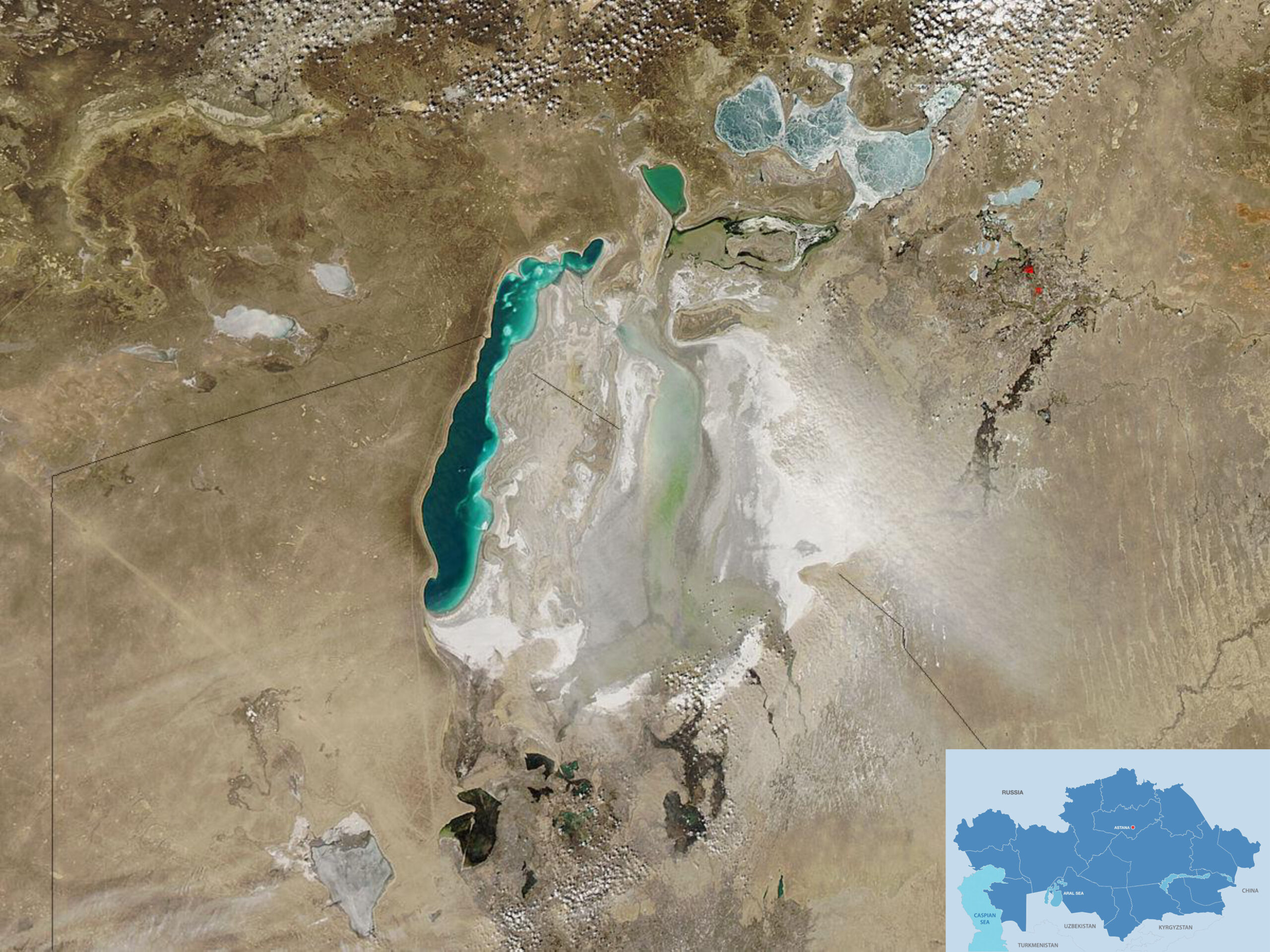ASTANA – The Kazakh Ministry of Water Resources and Irrigation, in collaboration with the World Bank, is advancing the second phase of the Northern Aral Sea preservation project. The sea has recently seen an increase in its water volume, with 1.1 billion cubic meters entering its basin, bringing the total volume to 21.4 billion cubic meters.

NASA image of the Aral Sea. Photo credit: kazaral.org Click to see the map in full size. The map is designed by The Astana Times.
In an interview with Kazinform news agency, Bakhyt Arystanov, the World Bank’s water resources management specialist, discussed the outcomes of the project’s first phase and outlined plans for the next stage.
What specific results were achieved in the project’s first phase?
The first phase successfully improved the Syrdarya River’s capacity through the construction of several hydraulic structures and stabilized the Northern Aral Sea’s level by building a dam. The sea level now stands at the projected 42 meters, and the water surface area has nearly doubled. Salinity levels have dropped significantly to around 10%. Previously, only flounder could survive in the high-salinity environment, but now over 20 fish species, many of which are commercial, thrive in the sea. This revival has given impetus to the local fishing industry. The project has also reversed population migration trends, with people returning to the region and resuming traditional activities after a period of outflow.
What will the second phase include?
The second phase of the project will be more comprehensive. It will fund not only the construction and reconstruction of water infrastructure but also support activities across various economic sectors. This includes boosting tourism, recreational activities, fishing, livestock farming, crop production and reforestation. Plans include planting saxaul trees on the dried seabed of the Aral Sea. The second phase will finance various initiatives and pilot projects in these areas.
The World Bank, in its infrastructure investments, prioritizes the long-term maintenance, operation and management of projects. To address these concerns, the project includes a third component focused on ensuring the durability of the built infrastructure. This component will establish an information database, implement automated water resource management methods, and introduce measures to ensure dam safety.
What is the World Bank’s funding amount, interest rate and term for these funds?
The exact funding amount is still being finalized as the feasibility study undergoes state construction expertise. Once approved, the project cost, particularly for the infrastructure component, will be confirmed. All cost calculations adhere to Kazakh standards.
It was preliminarily discussed that the World Bank would finance 85% of the project cost, with Kazakhstan contributing 15%. The final details, including the interest rate and term, will be addressed during project negotiations following the approval and submission of the feasibility study for the bank’s review.
Who will oversee budget utilization?
For projects funded by the World Bank, the bank’s rules on financial management, procurement and other safeguard policies will apply, regardless of the funding proportion. Technical supervision will be managed by a company chosen through a competitive selection process.
What are your thoughts on technology that increases precipitation in specific areas? Do you believe this approach is suitable for reviving the Aral Sea?
There are various technologies available for increasing precipitation, and while I am not prepared to comment in detail on this specific technology, I can say it is not new. The United Arab Emirates, for example, has been using it recently. However, this technology has not undergone extensive long-term analysis. If we compare it to medical intervention for an advanced illness, it’s akin to using a treatment that may have side effects. Any application of this technology should involve a thorough analysis of its potential consequences and side effects. It is crucial to assess whether the benefits outweigh these risks.
For the Aral Sea project, we have allocated $1.5 million in grants for the feasibility study and environmental and social assessments. The approach is professional, and the same careful consideration applies to the technology you mentioned. It must be thoroughly studied concerning the specific area where it will be implemented.
What forecasts can you give regarding the improvement of the Aral Sea’s condition?
The forecasts are optimistic due to the success of the first project. We are building on that success and aiming to further develop it. The World Bank typically does not offer a technical solution. Instead, it provides knowledge, experience and expertise. The experience with the Aral Sea is unique, as a sea of such size was nearly dried up. There are smaller-scale examples where certain technologies were applied successfully, suggesting that a solution for the Aral Sea in northern Kazakhstan can be found. The feasibility study is now complete, having considered four different options, and the most optimal one was chosen based on the sufficiency of water resources for its successful implementation.
The article was originally published in Kazinform.


